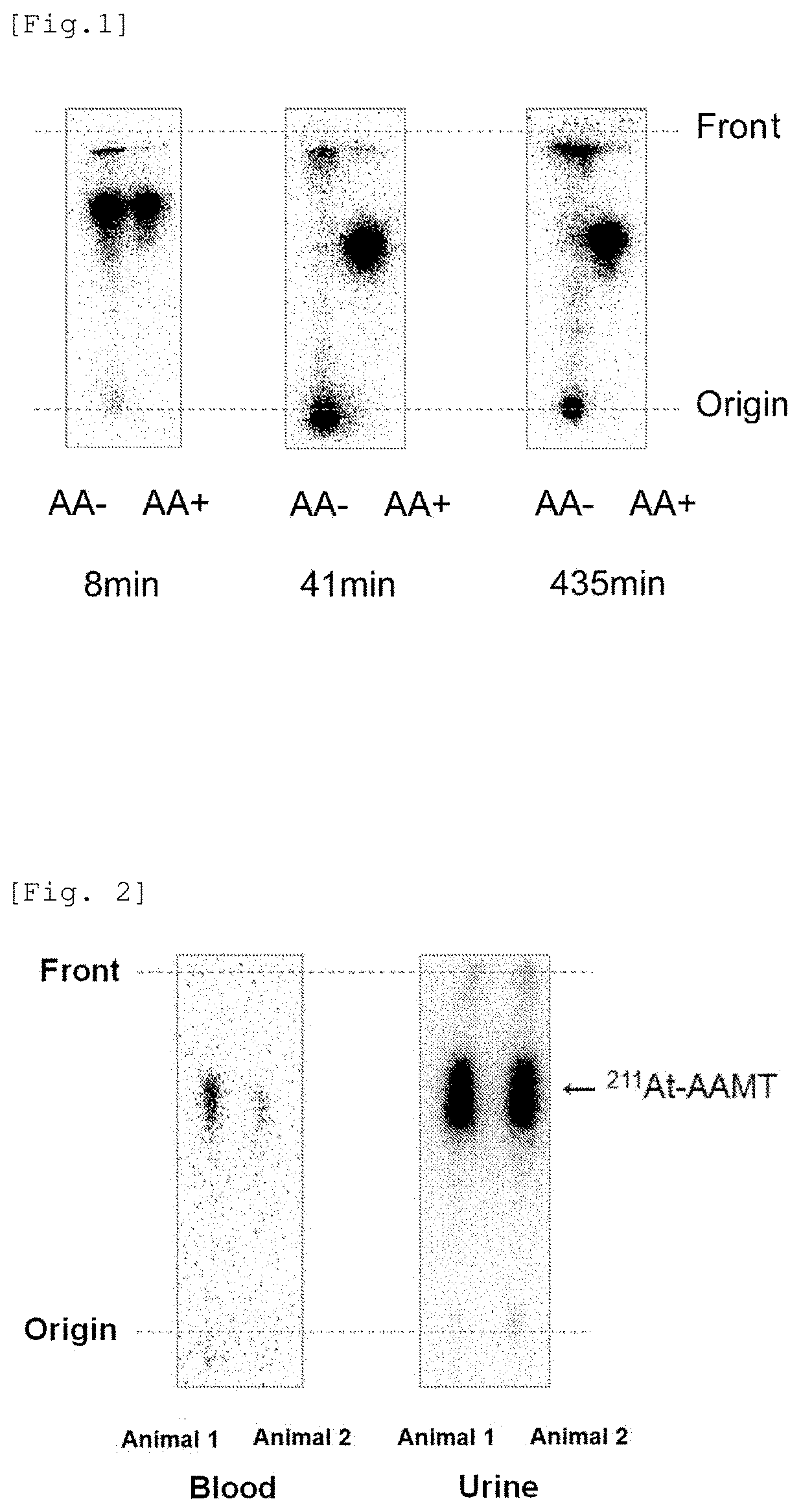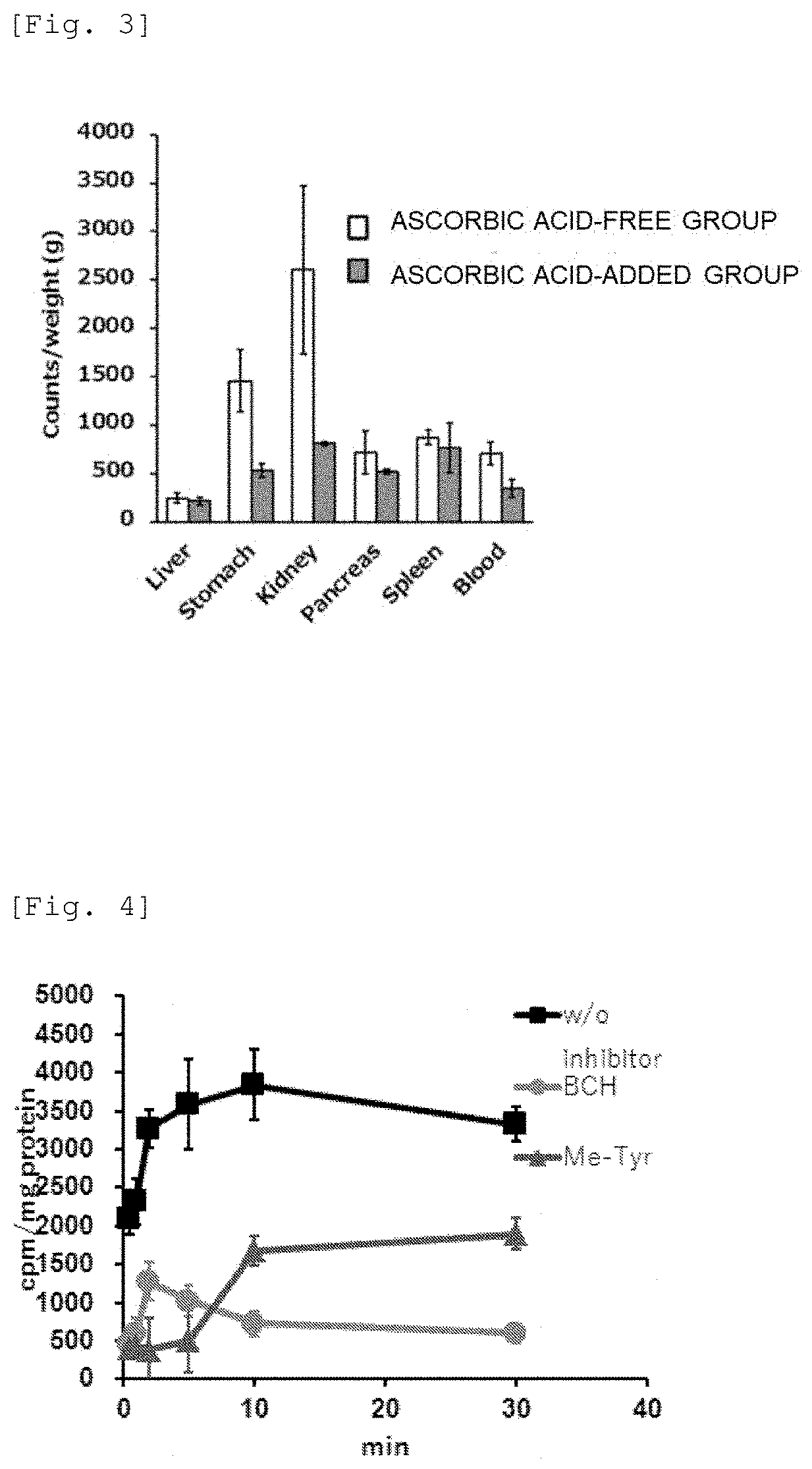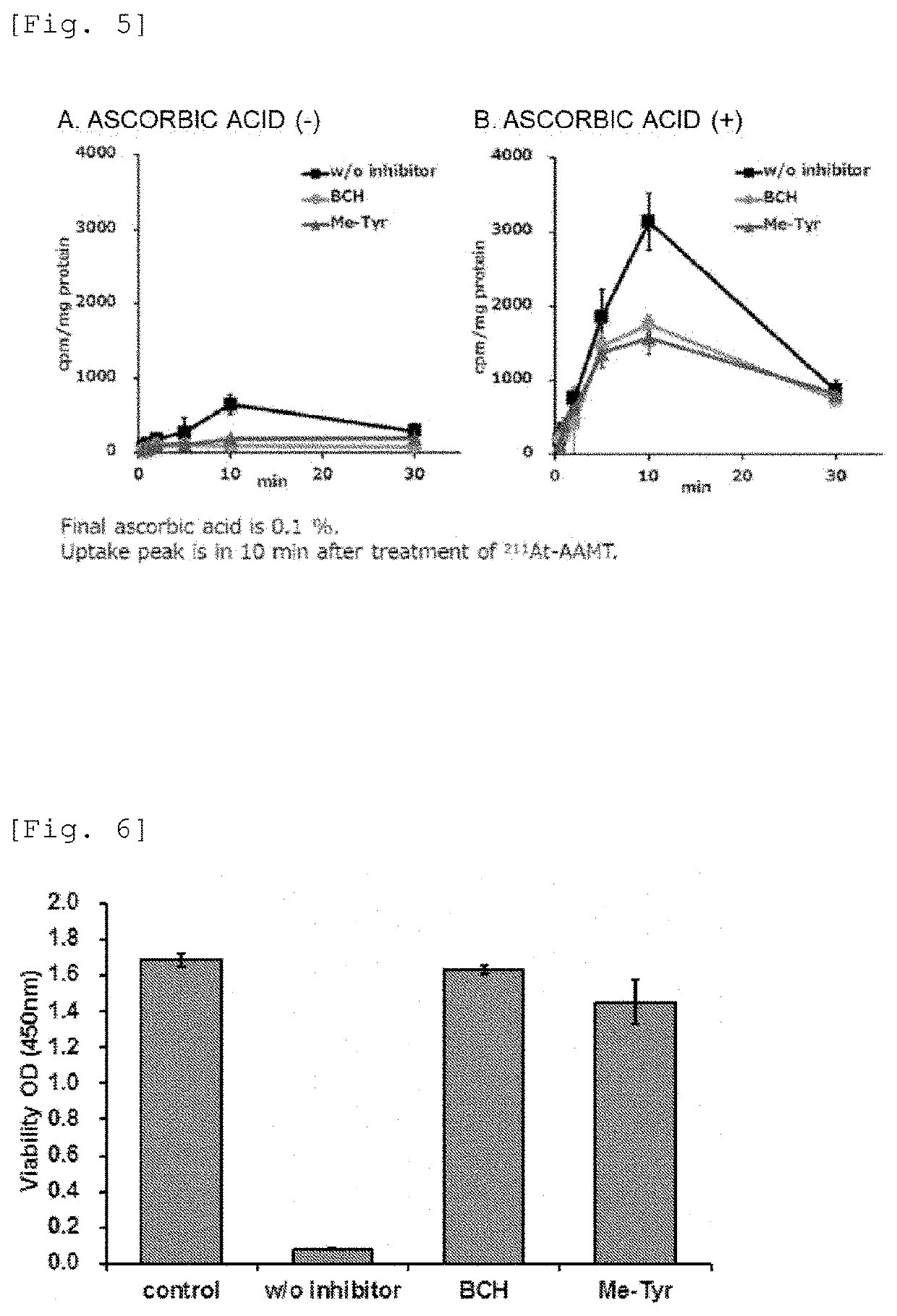Pharmaceutical composition containing 211at-labeled amino acid derivative, and method for producing said pharmaceutical composition
- Summary
- Abstract
- Description
- Claims
- Application Information
AI Technical Summary
Benefits of technology
Problems solved by technology
Method used
Image
Examples
example 1
[0104]1-1. Synthesis of 211At-Labeled Amino Acid Derivative Compound (211At-AAMT)
[0105](1) Preparation of 211At Aqueous Solution
[0106]A target substance Bismuth was irradiated with a helium particle (28 MeV, 1 to 2 pA) accelerated by cyclotron to cause a nuclear reaction of 209Bi(α, 2n)211At, thereby producing 211At in the target substance. The target substance including 211At was heated to 850° C. in an electric heater to be melted. The transpired 211At was dissolved in a small amount of water (0.1 to 2 mL) to prepare a 211At aqueous solution having a radioactivity concentration of about 5 MBq / ml.
[0107](2) 211At Labeling Reaction
[0108]α-methyl-L-tyrosine (22 μmol) and HgSO4 (20 μmol) were added to 0.5 mL of a H2SO4 aqueous solution (0.2 M), and the resulting mixture was stirred at room temperature for 2 hours. NaCl (45 μmol) was added to the reaction solution and the reaction solution was stirred for 5 minutes. To the reaction mixture, 100 μL of the 211At aqueous solution (about 5 ...
example 2
[0114]2. Stability of 211At-Labeled Amino Acid Derivative Compound (211At-AAMT)
[0115](1) In Vitro Stability
[0116]The stability of 211At-AAMT synthesized in Example 1 was compared in the presence and absence of sodium ascorbate using thin-layer chromatography (TLC). The result is shown in FIG. 1.
[0117]As a result, it was found that, in the absence of sodium ascorbate, almost all of 211At-AAMT was degraded in about 40 minutes, while, in the presence of sodium ascorbate, 211At-AAMT could stably exist even after the lapse of seven or more hours. This shows that the presence of ascorbic acid, which is a reducing agent, can stabilize 211At-AAMT by reducing dissociation of aromatic carbon-211At.
[0118](2) In Vivo (Inside of Mouse Living Body) Stability
[0119]211At-AAMT to which ascorbic acid was added at a final concentration of 1% was intravenously injected in normal rats, and, after one hour, blood and urine were collected and analyzed by thin-layer chromatography (TLC). As a thin layer pl...
example 3
[0122]3. Specific Accumulation of 211At-AAMT in Cancer Cells (In Vitro Experiment)
[0123]A human pancreatic cancer cell line (PANC-1) was treated with 211At-AAMT and cultured for a predetermined time. Then, the cells were washed to remove unincorporated 211At-AAMT. The cellular uptake of 211At-AAMT was measured from the radiation dose remaining in the cells. The result thereof is shown in FIG. 4.
[0124]As a result, 211At-AAMT was taken up immediately after addition of 211At-AAMT, and the uptake of 211At-AAMT reached the maximum value in about 10 minutes. Further, the uptake of 211At-AAMT was reduced by competition with a LAT1 inhibitor, BCH (2-aminobicyclo[2.2.1]heptane-2-carboxylic acid) or methyltyrosine performed in Comparative example. From this result, it was found that 211At-AAMT was specifically accumulated in the cancer cells via LAT1.
[0125]Further, an effect of ascorbic acid on the cellular accumulation of 211At-AAMT was also examined. The measurement result of the radiation ...
PUM
| Property | Measurement | Unit |
|---|---|---|
| Pressure | aaaaa | aaaaa |
| Stability | aaaaa | aaaaa |
| Affinity | aaaaa | aaaaa |
Abstract
Description
Claims
Application Information
 Login to View More
Login to View More - R&D
- Intellectual Property
- Life Sciences
- Materials
- Tech Scout
- Unparalleled Data Quality
- Higher Quality Content
- 60% Fewer Hallucinations
Browse by: Latest US Patents, China's latest patents, Technical Efficacy Thesaurus, Application Domain, Technology Topic, Popular Technical Reports.
© 2025 PatSnap. All rights reserved.Legal|Privacy policy|Modern Slavery Act Transparency Statement|Sitemap|About US| Contact US: help@patsnap.com



